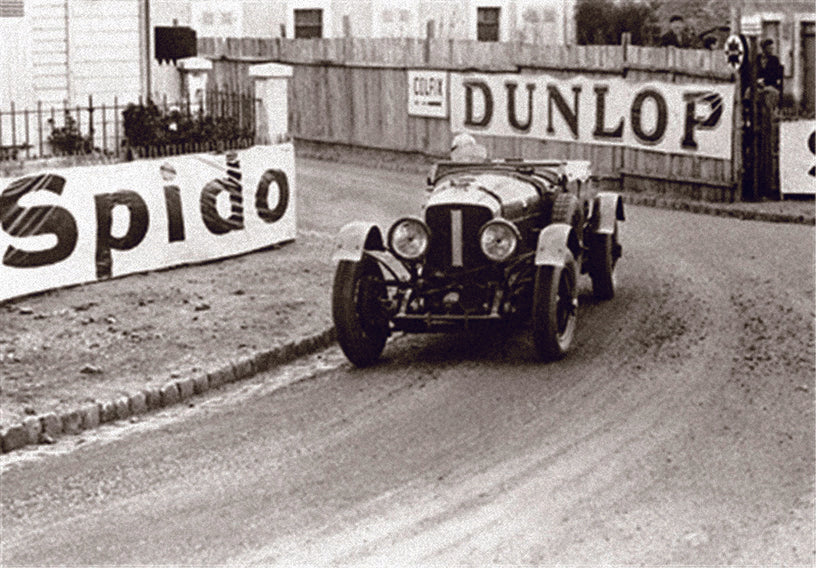
BENTLEY CHRONICLE PART1:#005
BENTLEY CHRONICLE PART1
W.O. Bentley and the Bentley Boy Years #005
Famous photograph of the winning car of Dr J. Dudley Benjafield and Sammy Davis, which won the 1927 Le Mans, the first overall victory in three years, being delivered to the Savoy Hotel in London, the venue of the post-competition celebrations.
■Suffering from Tough Racing
The 1926 Le Mans was once again a challenge. The Bentley works and the Bentley Boys entered a three-car team at Le Mans, determined to avenge the previous year's loss, but again they had a tough race ahead of them.
First, on lap 72, the George Duller / Frank Clement pair retired due to a problem with a valve in their engine. Next, on lap 105, the 3-Litre pairing of Arthur ‘Tommy’ Thistlethwayte and Captain Clive Gallop were also forced out of the race due to valve problems. The remaining survivor, the team of Sammy Davis and Dr Benjafield, running in third place, crashed on lap 138 with less than 30 minutes to go before the finish, forcing them to retire.
The winning car of the year was La Lorraine-Dietrich’s B3-6, which had finally broken the 100 km/h barrier with an average speed of 106.350 km/h. Le Mans, which was originally an endurance race, began to reveal aspects of speed racing.
■The 1927 Season Saw the First Victory in Four Years
In an effort to regain its stature after repeated humiliations at the Sarthe circuit, in 1927, the Bentley team entered a prototype 4 1/2 Litre, just launched that year, along with two other 3 Litres backed up by Bentley at Le Mans. Clement and Leslie Callingham, entrusted with the first 4 1/2 Litre by Chairman Barnato, led the race at an impressive pace, setting the fastest lap time of 8 minutes 46 seconds. However, on lap 35, they were in an accident involving all three works team Bentleys in the top group, forcing them to retire from the race.
Meanwhile, of the two 3 Litre cars in the same accident, Baron Andr? d’Erlanger / George Duller retired from the race, but the remaining car, with Dr Benjafield / Davis, bravely continued with the distorted chassis. This marked Bentley's first overall victory in four years.
■Second Consecutive Win by ‘Old Mother Gun’
In 1928, the Bentley works team entered three 4 1/2 Litres at Le Mans. Two of these were completely new. They were entrusted to the teams of Clement / Dr Benjafield and Tim Birkin / Jean Chassagne, respectively. The remaining car was the 4 1/2 Litre No. 1, which had been rescued and restored from the damage caused by the accident at the Maison Blanche the previous year. The Bentley Team members and the Bentley Boys gave it the affectionate moniker 'Old Mother Gun’.
1928 marked Woolf Barnato's first attempt at Le Mans as driver of the Old Mother Gun. It was also his partner Bernard Rubin's first time on the Sarthe circuit. Barnato was the head of Bentley and had the privilege of using the latest models if he wanted to, but he was the kind of man who, if there was more than one car in the team, would always opt for the most disadvantageous one. At Le Mans that year, however, two promising new cars ran into trouble one after the other: both had chassis cracks due to vibration. Old Mother Gun, the only surviving car, had the same frame trouble, but Barnato continued his valiant drive. He and his main rival that year, Stutz Black Hawk, set a series of new track records in a blisteringly accelerated race. With the right support from Rubin, Bentley took its second consecutive overall victory.
This is a revised version of an article that appeared in Flying B No 001 (2008). The information provided here was accurate at the time of publication.
Translation: Mako Ayabe and Michael Balderi



